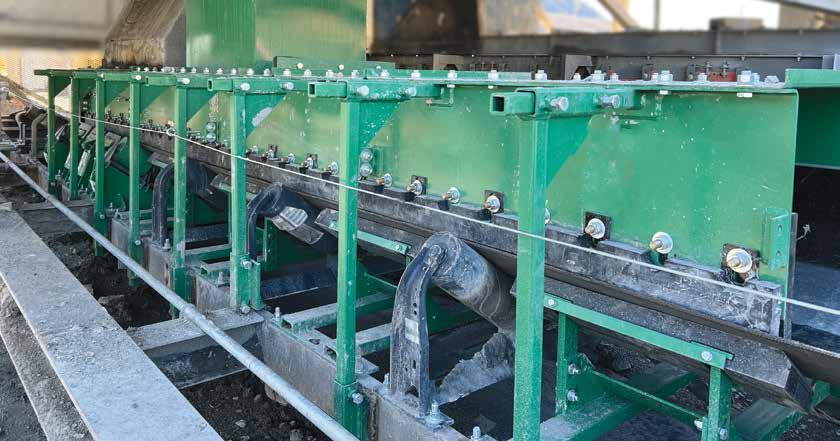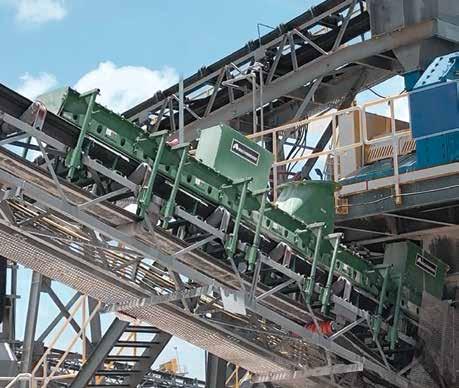
3 minute read
An engineered approach to solving dust containment problems at conveyor transfers
An engineered approach Material and dust containment. to solving dust containment problems at conveyor transfers
Safety and health hazards make containing dust and fines nonnegotiable in today’s mining environment. Additional problems associated with dust include environmental risks, increased house-keeping, and damage to equipment, as well as loss of product.
Identifying root causes is the first step to successfully solve the problem of airborne dust. Any time conveyed product is in motion it has the potential to generate dust. Dust and fines can be assumed if the product is moving, if there is an area of material free fall, and at any conveyor transfer areas. Our focus will be on dust that is specifically created at transfer areas where the conveyor is receiving material.
Engineered Passive Dust Containment is a system design that allows airborne dust to “settle” into the main stream of product without auxiliary equipment or additives to suppress or collect the dust particles. The Passive System does not require traditional methods of dust suppression such as water or chemical sprays or vacuum dust collection.
A Passive Containment System keeps material on the belt throughout the length of the conveyor transfer. It employs a series of chambers that are designed to reduce air velocity and allow dust particles to settle back down to the belt before exiting the transfer area.
The Passive Dust Containment System uses guidelines from CEMA (Conveyor Equipment Manufacturer’s Association) to determine the recommended time and distance for material settling at the load zone. This helps determine the general length of the skirtboard beyond the impact zone. This engineered system is built on three essentials:
1. Establish correct belting elevation for consistent support.
The impact-resistant cradleshaped Impact Saddle® with seal bar is recommended along with the use of Cushion Arc® impact idlers placed before and after the Impact Saddle bed.
According to CEMA standard 575, Impact Saddles are directly interchangeable with impact idlers and have the benefit of providing full trough support. The full support surface eliminates pinch points or gaps to provide the best foundation for sealing characteristics. Correct belt support and elevation are fundamental to a successful material containment system.
2. Next, a multi-layered approach that contains bulk material with internal wear liners and
external skirting media to seal dust. Additional components including skirtboards or skirt clamps in a variety of configurations and rubber. Ceramic or rubber/ceramic matrix Canoe Liners® can be recommended based on the needs of the application.
3. And lastly, once a solid base is in place and bulk materials and fines are contained, additional dust control components such as entry and exit dust curtains, dust-settling chambers, and end pieces are added to effectively create a total system design.
When fitted with an Engineered Passive Dust Containment System, busy transfer areas can be well equipped to handle the demands of efficiency, productivity, and safety that are required. Reliable, worry-free transfer areas are engineered every day at Richwood. To learn more about dust and material containment solutions, visit www.richwood.com. s

Protect your Investments from Load Zone Impact Damage.
Richwood Impact Saddles® are the original belt support system with full curved trough design.
Efficient load zones depend on properly designed, reliable support. The continuous impact bed formed by the Impact Saddle® provides unequaled protection against belt punctures, rip and tears. This foundational component provides the ideal base for safe and contained load zones.
What would it mean for your productivity if worry-free load zones were a part of your belt line? Call today +1 (304) 525-5436.
Rely on
RICHWOOD IMPACT SADDLES ®












